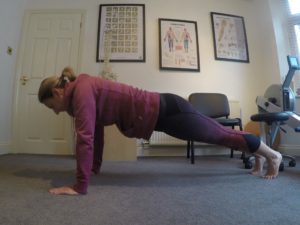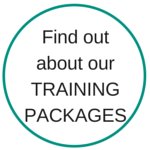The press up.
An exercise some will brag about. Yet one which seems out of reach for many – and feared. I often have personal training client get a look of panic when I mention this exercise, yet there are so many ways to adapt it to suit an individual’s physical abilities and work on improving strength. Nobody should fear the press up!
Why is it so hard to do a full press up?

I googled that exact phrase and was presented with why is it hard for women to do one!! Typical. This blog isn’t aimed at women – many men and women aren’t (yet) able to do one. There’s no reason why either gender can’t do this exercise.
But, I digress and this isn’t a male/female comparison. I am simply looking at why anyone will struggle to do a press up. Then I’ll address who to improve your strength in this exercise.
WHY DO I STRUGGLE DOING A PRESS UP?
The press up is a full body weight exercise. The main reason for their difficulty is because you have to control and push all of your bodyweight, and use muscles in a way they aren’t accustomed to (just like any new exercise really).
When, in everyday life do you push around the equivalent of your own bodyweight? Not very often I imagine. For reference, a washing machine weighs around 50kg and I weigh about 62kg at the moment.
This exercise predominantly works chest, shoulders, triceps and some back muscles. In addition, core muscles need to stabilise your body position, and your legs and glute muscles are also recruited in holding the plank position. So to achieve a full press up, you need to be strong pretty much all over!
Key points to performing this exercise with good form (bad form can lead to injury and slower progression in strength gain):
- Arm position – hands shoulder width apart, maybe a little wider but not much. Hands should be in line with your armpit. Elbows tucked in towards your body, rather than flaring outwards. This ensures you activate the correct chest and shoulder muscles.
- Tight core – body straight not arched or saggy. Think of the plank position – this is what needs to be maintained throughout the movement.
- Chest to ground – maintain good head alignment and do not reach forward with your head as this will strain your neck and not actually improve your press up form/strength.
Do bear in mind these key points for whatever level of press up you do….which I’ll now go on to explain.
HOW TO IMPROVE YOUR PRESS UP STRENGTH
So you feel a press up is totally out of your reach yet you’d like to do one….more than one? Great. Carry on reading.
Firstly. We need to assess what level you can currently do – is a standing wall press possible? Can you do a press on the kitchen worktop? Are you able to do one with your knees on the floor? Can you do the lowering phase of the movement with knees off the floor, but aren’t yet able to push up?
And there you have it. The way to progress from standing to full press ups. (there’s video’s below)
- Wall press
- Press on a raised surface (eg kitchen worktop)
- Knees on floor press up
- Eccentrics or negatives – just the lowering phase under full control
- Full press up
Once you know what level you can currently do you use that as your lowest level and work upwards – adding repetitions and sets until that level, then the next are achieved. It’s impossible to say how many sets and reps will help you to achieve that amazing first press up as we all start at different points. The key is to keep trying to do that full press up, alongside building up strength at the level you are currently at – then work up incrementally to the next level. In addition, there are other exercises you can do to help build strength – bench press, dips, plank, core work, deadlifting, to name a few.
Feel motivated to give it a go? Brilliant. Get Moving!
If you need help and guidance to ensure you are doing this exercise with the correct form, and building up safely without overtraining or not doing enough to challenge and build strength then get in touch today. We have space in our schedule to take on new Personal Training clients like you who really want to make a change and are prepared to invest in your fitness.
Get in touch TODAY – email Lynne or Tim on contact@globaltherapies.com





